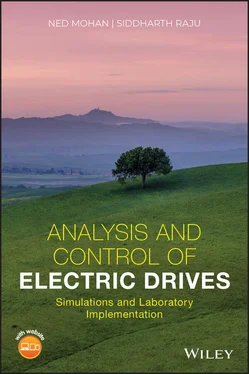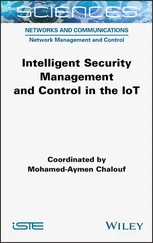332 334
333 335
334 336
335 337
336 338
337 339
338 340
339 341
340 342
341 343
342 344
343 345
344 346
345 347
346 348
347 349
348 350
349 351
350 352
351 353
352 354
353 355
354 356
355 357
356 358
357 359
358 360
359 361
360 362
361 363
362 364
363 365
364 366
365 367
366 368
367 369
368 370
369 371
370 372
371 373
372 374
373 375
374 377
375 378
376 379
377 380
378 381
379 382
380 383
381 384
382 385
383 386
384 387
385 388
386 389
387 390
388 391
389 392
390 393
391 394
392 395
393 396
394 397
395 398
396 399
397 401
398 402
399 403
400 404
401 405
402 406
403 407
404 408
405 409
406 410
407 411
408 412
409 413
410 414
411 415
412 416
413 417
414 418
415 419
416 420
417 421
418 422
419 423
420 424
421 425
422 427
423 428
424 429
425 430
426 431
427 432
428 433
429 434
430 435
431 436
432 437
433 438
434 439
435 440
436 441
437 442
438 443
439 444
440 445
441 446
442 447
443 448
444 449
445 450
446 451
447 453
448 454
449 455
450 456
451 457
452 458
453 459
454 460
455 461
456 462
457 463
458 464
459 465
460 466
461 467
462 468
463 469
464 470
465 471
466 473
467 474
468 475
469 476
470 477
471 478
472 479
473 480
474 481
475 482
476 483
477 484
478 485
479 486
480 487
481 488
482 489
483 490
484 491
485 492
486 493
487 494
488 495
489 496
490 497
491 498
492 499
493 501
494 502
495 503
496 504
497 505
498 506
499 507
500 508
501 509
502 510
503 511
504 512
505 513
506 514
507 515
508 516
509 517
510 518
511 519
512 520
513 521
514 522
515 523
516 524
517 525
518 526
519 527
520 528
521 529
522 530
523 531
524 532
525 533
526 534
527 535
528 536
529 537
530 538
531 539
ANALYSIS AND CONTROL OF ELECTRIC DRIVES
Simulations and Laboratory Implementation
Ned Mohan
University of Minnesota
Minneapolis, MN 55455
USA
Siddharth Raju
University of Minnesota
Minneapolis, MN 55455
USA

This edition first published 2021
© 2021 John Wiley & Sons, Inc.
All rights reserved. No part of this publication may be reproduced, stored in a retrieval system, or transmitted, in any form or by any means, electronic, mechanical, photocopying, recording or otherwise, except as permitted by law. Advice on how to obtain permission to reuse material from this title is available at http://www.wiley.com/go/permissions.
The right of Ned Mohan and Siddharth Raju to be identified as the authors of this work has been asserted in accordance with law.
Registered Office(s) John Wiley & Sons, Inc., 111 River Street, Hoboken, NJ 07030, USA John Wiley & Sons Ltd, The Atrium, Southern Gate, Chichester, West Sussex, PO19 8SQ, UK
Editorial Office The Atrium, Southern Gate, Chichester, West Sussex, PO19 8SQ, UK
For details of our global editorial offices, customer services, and more information about Wiley products visit us at www.wiley.com.
Wiley also publishes its books in a variety of electronic formats and by print‐on‐demand. Some content that appears in standard print versions of this book may not be available in other formats.
Limit of Liability/Disclaimer of Warranty MATLAB ®is a trademark of The MathWorks, Inc. The MathWorks does not warrant the accuracy of the text or exercises in this book. This work's use or discussion of MATLAB ®software or related products does not constitute endorsement or sponsorship by The MathWorks of a particular pedagogical approach or particular use of the MATLAB ®software. Sciamble ®Workbench is a trademark of Sciamble Corp., and is used with permission. The Sciamble Corp. does not warrant the accuracy of the text or exercises in this book. This work's use or discussion of Sciamble ®Workbench software or related products does not constitute endorsement or sponsorship by Sciamble Corp. of a particular pedagogical approach or particular use of the Sciamble ®Workbench software. While the publisher and authors have used their best efforts in preparing this work, they make no representations or warranties with respect to the accuracy or completeness of the contents of this work and specifically disclaim all warranties, including without limitation any implied warranties of merchantability or fitness for a particular purpose. No warranty may be created or extended by sales representatives, written sales materials or promotional statements for this work. The fact that an organization, website, or product is referred to in this work as a citation and/or potential source of further information does not mean that the publisher and authors endorse the information or services the organization, website, or product may provide or recommendations it may make. This work is sold with the understanding that the publisher is not engaged in rendering professional services. The advice and strategies contained herein may not be suitable for your situation. You should consult with a specialist where appropriate. Further, readers should be aware that websites listed in this work may have changed or disappeared between when this work was written and when it is read. Neither the publisher nor authors shall be liable for any loss of profit or any other commercial damages, including but not limited to special, incidental, consequential, or other damages.
Library of Congress Cataloging‐in‐Publication Data Names: Mohan, Ned, author. | Raju, Siddharth, author. Title: Analysis and control of electric drives : simulations and laboratory implementation / Ned Mohan, Siddharth Raju. Description: Hoboken, NJ : Wiley, 2021. | Includes index. Identifiers: LCCN 2020022305 (print) | LCCN 2020022306 (ebook) | ISBN 9781119584537 (hardback) | ISBN 9781119584513 (adobe pdf) | ISBN 9781119584551 (epub) Subjects: LCSH: Electric driving--Mathematical models--Textbooks. | AC‐to‐AC converters–Textbooks. | Field orientation principle (Electrical engineering)–Textbooks. Classification: LCC TK4058 .M5779 2021 (print) | LCC TK4058 (ebook) | DDC 621.46–dc23 LC record available at https://lccn.loc.gov/2020022305LC ebook record available at https://lccn.loc.gov/2020022306
Cover Design: Wiley
Cover Image: © Westend61/Getty Images
Electric machines and drives are used in all aspects of our life wherever electricity is used. Nearly all the electricity is generated through electric generators and drives. Almost two‐thirds of this electricity is consumed by motor‐driven systems in the United States. There are opportunities for energy savings by making generators and motors more efficient. In addition, substantial energy savings can be obtained by converting motors that operate at essentially constant speed to variable speed drives, where the motor speed is efficiently controlled to match the system requirements, thus resulting in substantial system‐wide energy savings. There are emerging applications, such as electric vehicles, robotics, and drones, where precise speed and position control are essential. All these applications demand vector‐controlled ac drives that are discussed in this textbook.
Читать дальше













